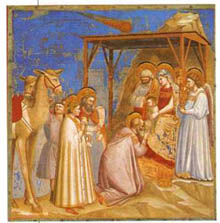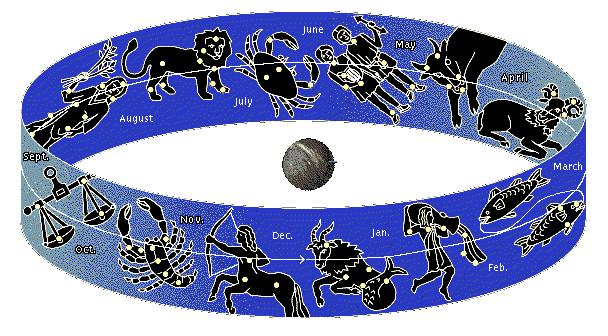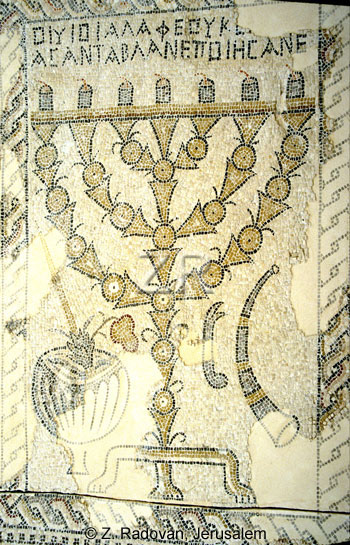
The Christmas Holidays and the Birth of Jesus Christ
Entering the traditional holiday season and the historical celebration of the birth of our Lord Jesus Christ, always raises the question of when the actual birth of Christ took place. Most people realize that the date of Jesus Christ’s birth was not on December 25th, despite the nativity scenes or the historical “Christmas” holiday. In order to distinguish the truth about the actual birth of Jesus from what tradition has held for centuries, we must take a hard and detailed look at what the Bible says about the birth of Christ first and foremost. The Biblical witness to the birth of Christ, along with what history and astronomy tell us about not only the year, but also the day of Christ’s birth, is detailed here.
The birth of Christ as the anointed Savior of the world was a highly anticipated and longed for event, being prophesied not only in the Bible and Biblical cultures, but also non-Christian or Judaic religions. Many world cultures have a rich tradition of the coming of a foretold Savior of the world. Thus the significance of the birth of Jesus Christ has worldwide implications, but we must start with the Biblical record to get a clear understanding of what the Bible says about the birth of Jesus. As we begin our study of the Biblical record of the birth of Jesus Christ in the gospel of Matthew, we notice key astronomical events leading the Magi to Jerusalem in search of the new born King of Kings. It is therefore critical to recognize what the Bible says about Astronomy, along with the heavenly signs that took place from 3 to 1 BC. As we view the Biblical and historical record we will find awesome detail in how the celestial epistles support, compliment and establish the witness of God’s Word. Some astronomers and theologians have tried to link the 12 BC sighting of Halley’s Comet with the birth of Jesus Christ, as seen in the graphic below, but this is much too early to accurately tie into the biblical record of Christ’s Birthday. Comets also have been seen as a sign of evil and foreboding, not marking the coming of a great king. All the kingdoms of Creation truly stand in Praise and Honor to the witness of the Creator, Who founded the heavens, and set their combined beauty in motion, marking the birth of Jesus Christ the King of Kings.

In earlier posts on this Blood Moon blog, we have seen how the heavenly signs of the Celestial Prelude set the pattern for the birth of Jesus Christ, as recognized by the Magi. As we have noted, the Magi would have perceived the tantalizing detail of heavenly signs from 7 BC to 5 BC, and we can imagine their excitement as they witnessed the heavens come alive with the prophesied signs of the Messiah’s birth. We have also come to realize the significance of the sacred feasts of the Hebrew calendar, marked by the Blood Moon Tetrads of the Age of Grace and the importance of Tishri 1, Rosh Hashannah linked to the first sighting of the New Moon at the feet of Virgo, on the equivalent of our September, 11th 3 BC. This highlighted Hebrew New Years Day in the most sacred seventh month in the Hebrew calendar, marking the birth of Christ.
Matt. 2:1-2, 9-10 Mat 2:1 Now when Jesus was born in Bethlehem of Judea in the days of Herod the king, behold, there came wise men from the east to Jerusalem, [2] Saying, Where is he that is born King of the Jews? For we have seen his star in the east, and are come to worship him. Mat 2:9 and are come to worship him When they had heard the king, they departed; and, lo, the star, which they saw in the east, went before them, till it came and stood over where the young child was. [10] When they saw the star, they rejoiced with exceeding great joy.
When the Magi first noticed Jupiter, his star in the rising, in August of 3 BC, it began a corroboration of the celestial prelude of 7-5 BC, and it set the wheels in motion bringing them to their historic destination, to discover the promised seed of Israel in Bethlehem, in December of 2 BC. In Matthew 2:2 the Magi asked the first question recorded in the Gospels when they said; Where is he that is born King of the Jews? As the only ones aware of the true nature of the heavenly signs of Jesus’ birth, these Gentile Magi set the stage for all the world to salute the King of Kings.
The Greek words in Matt. 2:2, “in the east“ are en te anatole, literally meaning “in the rising, referring to the Heliacal Rising of a star in the dawn before sunrise.” 1 The “east“ is a Biblical figure of speech called an idiom representing truth, which is appropriate since the Messiah’s birth would bring the long awaited “all truth” [Jn. 16:13] of the ages. An interesting aspect of this word “anatole” is that it’s Hebrew equivalent is translated “tsemach.” This is a direct correlation to the star Al Zimach (the branch) in Virgo, known to us as Spica. This is the stellar representation of Jesus Christ as the promised seed of the woman Virgo, in a constellation representing Israel. Thus, the sunlight of the dawn and the light of “his star”–Jupiter are both seen prophesying the birth of “the branch” Jesus Christ. This witness of the Scripture not only alerts us to the roles of both Jupiter and the Sun in the stellar revelation of the birth of Jesus Christ the Promised seed, but it also reflects the year-month affinity between the cycles of the Sun and Jupiter. As the Sun spends a month in each of the 12 signs of the zodiac, so Jupiter spends a year enlightening each zodiacal sign.
Thus the light of the king planet Jupiter, in it’s Heliacal Rising in Conjunction with Regulus the king star in Leo, signaled the Magi regarding the birth of the Christ the King. With Jupiter in retrograde motion in Leo, it highlighted the king star Regulus in a triple conjunction between 3-2 BC. [triple Gen. 49:9-10]
The accuracy of God’s Word here is truly breathtaking, when we consider that the same word for both the sunlight of dawn, and the pre-dawn light of Jupiter are translated as “the branch” in the Hebrew. This prophecy of Jupiter and the Sun, also witnesses to the 4 dimensions of Christ’s ministry as the branch; the King, Son of Man, Son of God and Servant, as seen in the four gospels; Matthew, Luke, John and Mark. When Jesus Christ matured to full manhood according to Hebrew Law, at age 30, he displayed the full awareness of his place in history, and his local circumstances, by announcing the opening of his ministry during a Jubilee year.
Just as the Sabbatical year was a year of rest and restoration for the land and soil, so also was the Jubilee, which was heralded by a chorus of trumpets. What better year than a Sabbatical year could there be for Jesus Christ to carry out his ministry? What better time could there be for the renewal of all Creation, than the birthday of the promised seed enacting its recovery? 28 A.D. was also the year that Jesus was resurrected and in this “year of our Lord,” Christ Jesus proved his Lordship over both the Sabbaths of days and years, for example by working seven healing miracles on seven Sabbaths of rest during his ministry to Israel. Of special interest in the sacred seventh month, is the lunar cycle which provided the basis of the Hebrew calendar, devoted to the Lord. On Tishri 1 the first-born or New Moon was specially celebrated at the “Feast of Trumpets,” which coincided with the first appearance of the thin crescent moon under Virgo’s feet on this natal day of creation, the Day of Trumpets, our September 11th, 3 BC. We have also noted in previous posts on our Blood Moon Blog, that the birth date of Christ was framed by Blood Moon Lunar eclipses near Passover in 5 BC, and coinciding with the death of King Herod in January 1 BC. [read more]
To grasp the significance of the the birth date of Jesus Christ in Biblical Astronomy terms, we need to take a closer look at the Creation record, when God first set the heavenly orbs into motion.

Gen. 1:14-18
14 And God Said Let there be lights in the firmament of the heaven, to divide the day from the night: and let them be for signs, and for seasons, and for days, and for years: 15 And let them be for lights in the firmament of the heaven to give light upon the earth: and it was so. 16 And God made two great lights; the greater light to rule the day, and the lesser light to rule the night: He made the stars also. 17 And God set them in the firmament of the heaven to give light upon the earth. 18 And to rule over the day and over the night, and to divide the light from the darkness, and God saw that it was good.

The word for “lights” in the firmament [Gen. 1:14, 16 “maor“] is the same word used in reference to the lamps of the Menorah, (Ex. 20:27, 35:14). This word shares the same root of the word used for “light” in Genesis 1:3-4, which God divided from the darkness, setting the standards of Day and Night. It is noteworthy that the Day was divided from the Night and the light from the darkness prior to the Creation of the Sun and Moon. Also, the foundational order of Creation seen in God’s command dividing the light from the chaotic darkness, incited by the enemy in his overthrow of God’s original order in the First Heaven and Earth, preceded God’s re-ordering of this light in the Second Heavens and Earth. The verses above also exhibit how the Sun, Moon and Stars regulate the seasons, feasts and years in God’s created temporal order. [read more]
They were also important markers for someone significant to come, in this case the Redeemer of Mankind-Jesus Christ, in both his birth and Second Coming. [Jupiter’s Triple coronation of Regulus video and graphic] As such, and within the context of the dual application of the prophecy in Rev. 12:1-2, and the Blood Moon Tetrad of 2014-2015, with the other heavenly signs and celestial cycles involving the Sun, Moon and Stars, point out a general and even more detailed timing of the Second Coming of Christ, just as they did with his birth and first appearance. This reference from Genesis reveals the links between the cycles of the Sun and Moon, and the light which these two great lights shed upon the earth. The purpose of the Sun, like other stars, is to give light upon the earth, the nature of which is a three-fold light. First, it’s physical light in a literal sense because the stars along with the moon and planets illuminate the earth. Secondly, as we have seen in the study of astronomical cycles, their numerical model is based on the phi ratio, and the base 60 Space-Time standard of the precession of the equinoxes. This is an important aspect of Natural Law, reflected in the symmetry of creation. Phi ratio Symmetry is the basis of the nano-structure of microcosmic matter, the macrocosm of the firmament, and the conceptual world of mathematics. Symmetry is latent in God’s created temporal order, ruled by the regular cycles of the Sun, Moon and Stars, daily and yearly. Thirdly, the stars, planets, Sun and Moon illuminate earth in spiritual light: the eternal light of the witness of God’s Word, a primary theme of our study. The principles of these 2 great lights ruling over the day and night, marking out days, months and years, is also preserved in the luni-solar calendar of Israel, unified according to the phi ratio, in symphony with the 50-year cycle of the Hebrew Jubilee. The phi ratio, also known as the divine proportion, or golden ratio, is a central aspect of the Symmetry and beauty in God’s creation. We find this depicted in the word “Seasons” in Gen. 1:14 [H4150-moed] meaning an appointed or fixed time, signal, an assembly convened for a specific purpose, a solemn feast or festival, place of meeting, or year.2 Thus, as these 2 great lights of the Sun and Moon coordinate with the stars exhibiting special signs on the holy feast days and sacred festivals of the Hebrew calendar, we find the unification of these three celestial calendars in God’s created temporal order exerting a powerful influence as a “mandate from heaven,” over Israel and the cultures of the world. A great example of this is the current Blood Moon mania in the headlines of world media, raising the awareness of end times prophecy and the history of Israel in the collective public mind.
Since Rosh Hashanah as Tishri 1, is the “head” of the Hebrew calendar, New Year’s day and Jesus’birthday, the first day of the 50-year Hebrew cycle of Jubilees, it gets our undivided attention as we realize that New Years Day on the Hebrew Calendar is also marked by the Blood Moons and Solar eclipses over the last 2000 years. Since the Blood Moons embody a state of crises or the bloodshed resulting from War in Israel, we can trace the activities of the spiritual enemies of Israel throughout Biblical and secular history. To gain a true insight into the links in Blood Moon Tetrads with Hebrew feasts, we need to grasp how Christ relates to these Hebrew feasts. Rosh ha-Shanah on Tishri 1, was the “head” of the Judean calendar as New Year’s day and Jesus’ birthday, the first day of the 50-year Hebrew cycle of Jubilees. This set the foundation temporal pattern of the holy seasons, and feasts of Israel’s sacred calendar. During the “Great Wonder” of Rev. 12:1, the feet of the woman, Virgo fall at the autumnal equinox, one of the so-called four “pillars of heaven,” the four Cardinal Directions on the compass. This celestial point was generally marked on the Hebrew calendar by the Feast of Tabernacles, which occurred later during this Seventh Month. The significance of Tishri 1 the seventh month, is seen in the following from Edersheim:
“Just as age was reckoned from Tishri 1 to Tishri 1, so were the regnal years of Judean Kings. The blowing of Rams horn trumpets was also part of the royal coronation ceremony of these Judean Kings.”3
Thus the inception of Jesus’ reign as King of Kings is marked on his birthday of Tishri 1, the “Day of Trumpets,” with heavenly signs in Virgo near Spica, so we see similar signs with Blood Moon Lunar and Solar eclipses occurring on Hebrew feasts marked by a series Blood Moon Tetrads. The significance of the king’s coronation tied to Rosh Hashanah, New Years Day and the head of Israel’s calendar, is that Christ is the King of Kings presiding over all temporal, civil and sacred matters as the King-High Priest of Israel.
This represents the first installment on our Blood Moon Blog post, on The Birthdate of Jesus Christ, with Part 2 coming later this month.
Merry Christmas and Happy Holidays Folks!!
Footnotes
1. Thayer’s Greek-English Lexicon of the NT, Thayer
2. Ibid-H4250
3. The Temple, Alfred Edersheim
4. Thayer’s Greek-English Lexicon of the NT, H5982, H5975